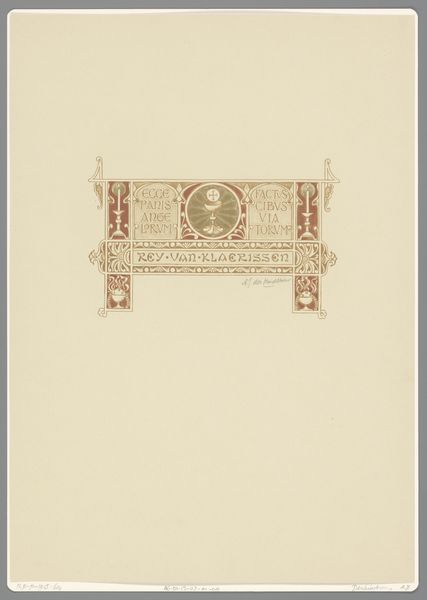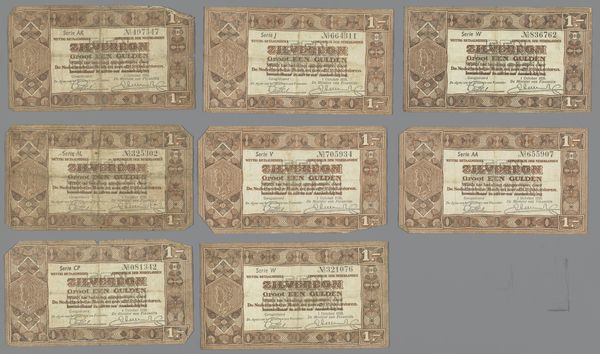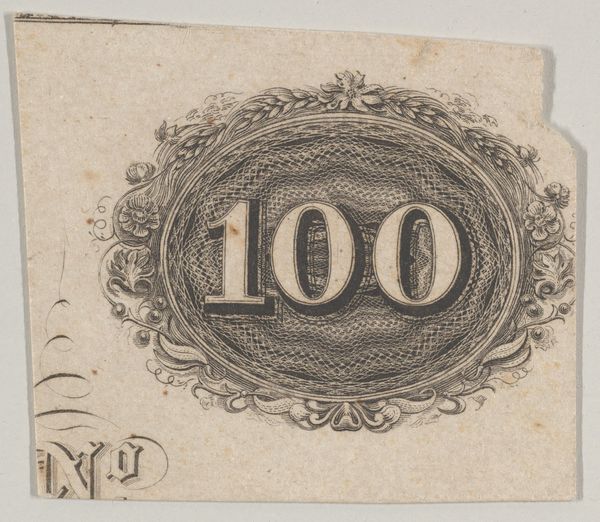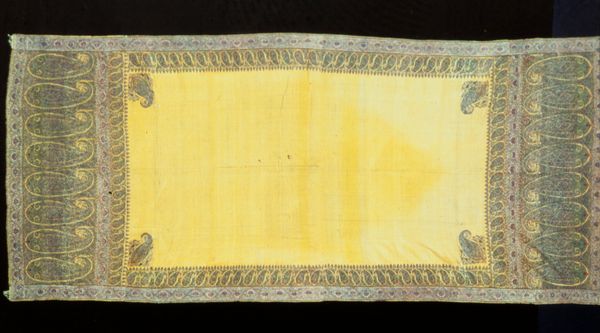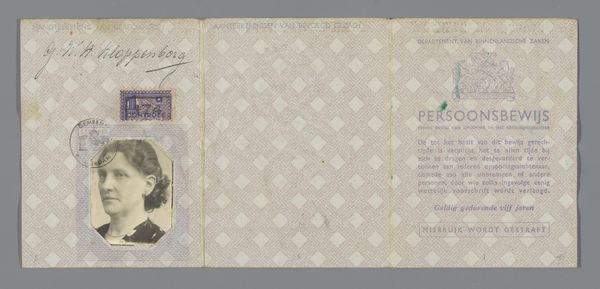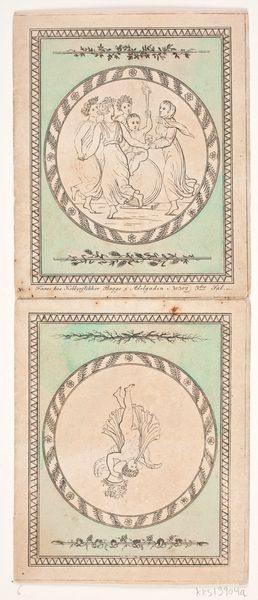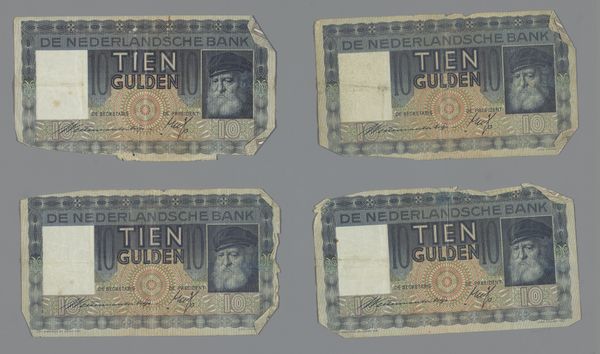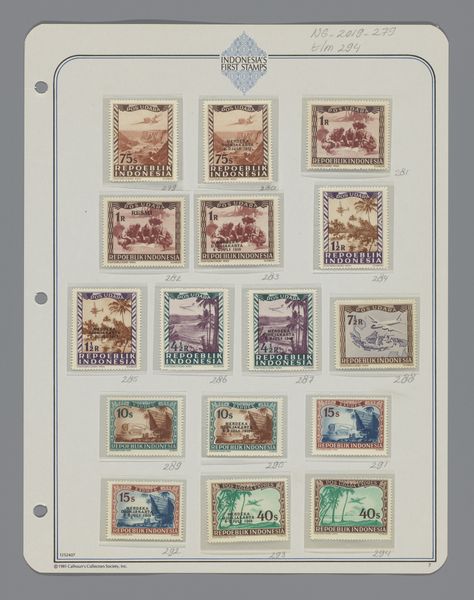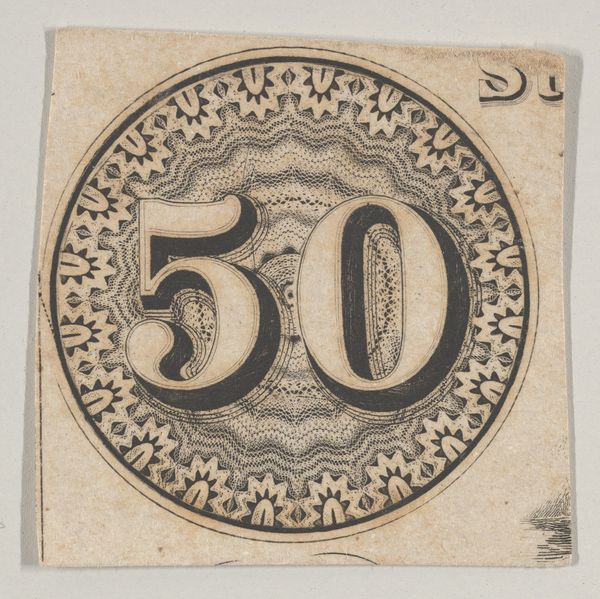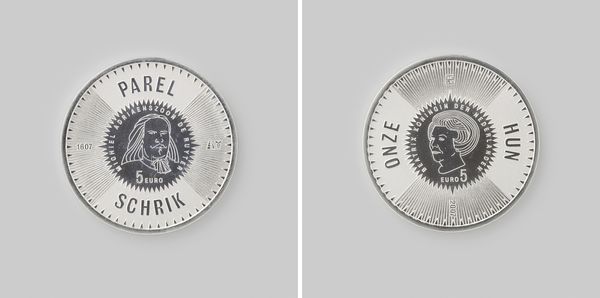
graphic-art, print
#
graphic-art
# print
#
modernism
Dimensions: height 5.9 cm, width 11.4 cm
Copyright: Rijks Museum: Open Domain
Artist: Looking at these sheets of pale peach, they remind me of faded postcards or old theatre tickets. Art Historian: These are actually printing proofs for a one Gulden banknote, "Een Gulden," likely from around 1945. The artist is Thomas De La Rue & Company Ltd. This belongs to the graphic arts, specifically as a print, and might also carry undertones of Modernism in its style. Artist: Printing proofs, interesting. So these sheets weren’t meant to circulate but to demonstrate the note’s design to a client, maybe? I can almost feel the nervous anticipation of waiting for approval, the pressure to get it just right. The sameness, though, strikes me... rows upon rows, suggesting the machine production, devoid of any spontaneity or feeling. Art Historian: Exactly! These proofs reveal so much about the industrial process of currency production. And while you sense a lack of spontaneity, consider the immense control needed to reproduce that exact portrait with such consistency across hundreds of sheets. These banknotes represented postwar efforts toward economic and social reconstruction. Currency, and its design, has always been a way for countries to show sovereignty. Artist: Reconstruction…so this peach hue hints not at nostalgia but at a deliberate kind of...order? Like, “Here is our money, neatly organized.” Art Historian: Indeed! It signals the return of order after chaos, using recognizable imagery. See that woman's portrait recurring over and over? By placing this symbolic image within everyone’s reach, she, and by extension the state she represented, would re-establish its power. And this new currency demonstrates that Netherlands is on the path towards prosperity, it will thrive economically. Artist: I get it! They’re not just making money, they are constructing confidence. Well, in terms of its layout, the portrait seems stiff to me but the details, on the other hand, the intricate ornamentation around the denomination is remarkable. It shows, also, a moment of calm in this time of turmoil that had passed by recently. Art Historian: Indeed! This work reflects its historical setting, by displaying the Dutch aim to restore stability by creating confidence. That is why such detailed images are used! Artist: Okay, looking at this artwork now, I see more layers, that those peach sheets have embedded into its very fibers resilience in those fragile economic recovery processes.
Comments
No comments
Be the first to comment and join the conversation on the ultimate creative platform.

